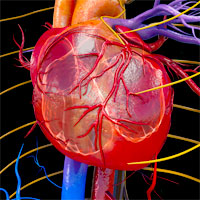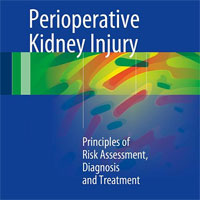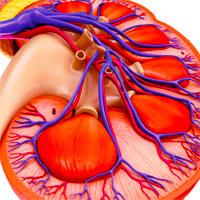
Hypernatremia & Dehydration in the ICU
Hypernatremia is very common in the ICU. It often develops during ICU admission due to inadequate free water administration. Hypernatremia is not benign, it causes profound thirst, particularly among intubated patients, this... read more

Hypotensive Response to IV Acetaminophen in Pediatric Cardiac Patients
In isolation of other medication, a hemodynamic response to IV acetaminophen has a higher prevalence in critically ill children with cardiac disease than previously thought and justifies controlled studies in the perioperative... read more

Effects of Baseline Thrombocytopenia and Platelet Decrease Following RRT Initiation in Patients With Severe AKI
Baseline thrombocytopenia and platelet decrease following renal replacement therapy initiation were associated with increased mortality, and baseline thrombocytopenia was associated with decreased rates of renal recovery.... read more

Minimizing Catecholamines and Optimizing Perfusion
The main goal of hemodynamic resuscitation in shock is to improve tissue perfusion and oxygenation. As these cannot be directly evaluated at bedside in routine practice, physicians are left with surrogates such as perfusion... read more

An Innovative Virtual Reality Experience in the PICU
Virtual reality is an innovative, easily administered, and enjoyable tool that subjectively calms PICU patients in an otherwise chaotic environment. 100% of participants enjoyed using virtual reality, and 84% reported preference... read more
Who May Benefit Most From Future Vitamin D Intervention Trials
High-dose vitamin D3 supplementation was associated with a reduction of 28-day mortality in a mixed population of critically ill adults with vitamin D deficiency when excluding patients who died or were discharged within... read more

Validation and Critical Evaluation of the Effective Arterial Elastance in Critically Ill Patients
In critically ill patients, effective arterial elastance may be reliably estimated at bedside. We support the use of this validated estimate of effective arterial elastance when coupled with an index of left ventricular contractility... read more

Perioperative Kidney Injury: Principles of Risk Assessment, Diagnosis and Treatment
The kidneys participate in all vital processes of the body to maintain overall homeostasis and health. When kidneys are injured during surgical interventions, metabolic and hemodynamic control is disrupted, leading to dysfunction... read more

Huddling for High Reliability and Situation Awareness
This study objectives were to explore hospital administrator and frontline staff perspectives on the benefits and challenges of implementing a tiered huddle system; and propose a model based on our findings depicting the... read more

Acute Kidney Injury in Cirrhosis
Novel biomarkers may assist in identification of acute tubular necrosis and persistent/severe acute kidney injury (AKI). Norepinephrine has been suggested to be inferior to terlipressin, with additional research required.... read more
What influences critical care doctors in withdrawing life support for patients with brain injury?
Decisions to withdraw life support treatments in critically ill patients with severe brain injury are complicated, are based on many factors, and are usually made by critical care physicians and families in the intensive... read more

Noninvasive Ventilation Through the Helmet Can Be Used For Early Mild and Moderate ARDS
Debating data have been published as regards the beneficial or deleterious effect of spontaneous breathing (SB) in comparison to controlled mechanical ventilation (CMV) during acute respiratory failure. Spontaneous breathing... read more

Post-discharge Impact of Healthcare-associated Infections in a Developing Country
The impact of healthcare-associated infections (HCAIs) on in-hospital mortality, morbidity, length-of-stay, and costs has been extensively reported. However, few studies have focused on the follow-up of HCAI-affected subjects... read more
Withholding or Withdrawing of Life-sustaining Therapy in Older Adults Admitted to the ICU
The most important patient variables associated with the instigation of Life-sustaining Therapy (LST) limitation were acute admission, frailty, age, admission SOFA score and country. LST limitation was identified in 1356/5021... read more








